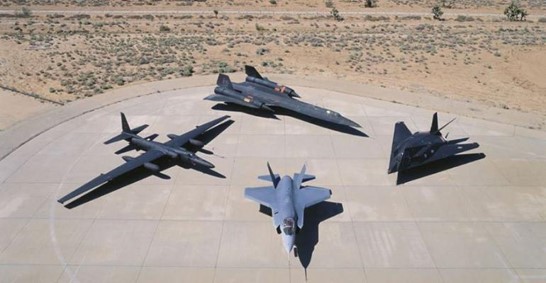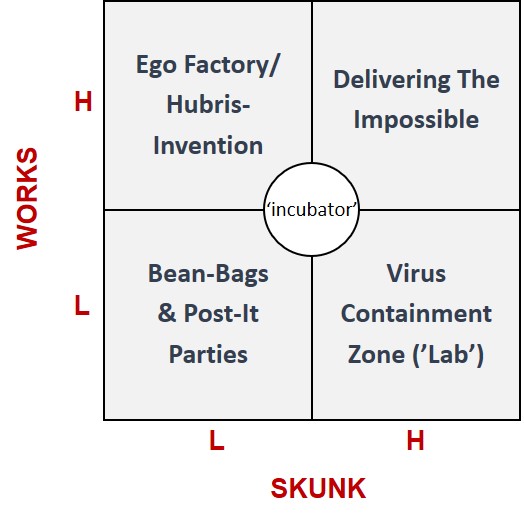
For some reason I’ve had a flurry of conversations lately with organisations thinking about setting up some kind of sexy innovation ‘centre’ or ‘lab’ or ‘hot-house’. The conversation quickly devolves into ‘it depends’ territory. Sometimes it’s a good idea; sometimes it’s not. The answer depends on the Level of Innovation Capability Maturity of the enterprise. At Level 1, it’s usually a really bad idea; Level 2 and it potentially becomes a good idea; Level 3 and it’s probably a bad idea again.
The usual model for these kinds of innovation early learning centre is the Lockheed Skunk Works.
When it was set up, in the late 1930s, Lockheed was a Level 2 Capability innovator. Actually, they probably still are. The aerospace industry has some particular innovation challenges to overcome that make it very difficult to evolve past Level 2, not least of which is the need to be able to re-assure customers that you’re the safest industry on the planet (no-one likes it when aeroplanes fall out of the sky), and that you’re simultaneously able to do exciting new things.
Skunk Works solves the contradiction by physically separating production and development activities. Different rules, different protocols, different procedures, different reward systems. Different pretty much everything. Operations World and Innovation World are literally two separate worlds.
What’s often lost on Level 2 ICMM enterprises contemplating their own Skunk Works is the significance of the name chosen by Lockheed.
First up, ‘Skunk’. Which is deliberately a very non-aspirational kind of creature. When someone calls you a skunk, they’re probably not being complimentary. Very few people want to be tarred with such a non-attractive label. Which turns out to be a terrific way of separating the innovators and the operational excellence people in an organisation. Innovators know that they’re looked down on by the rest of the enterprise, and they don’t care. They’re people with a different perspective on why they come to work each day. Ego means nothing; doing exciting stuff means everything.
Second comes ‘Works’. This is slightly more subtle than ‘Skunk’, but it is nevertheless a critical part of Lockheed’s success. Skunk Works is a place where work is done. It’s not a ‘lab’ or an ‘incubator’ or a ‘centre’ or any other pretty name for a physical space full of bean-bags and motivational creativity posters. A Works produce real aircraft that are going to fly in the real sky. It is an innovation factory.
The two words form an important contradiction that prospective innovators need to embrace and work through:

I was fortunate enough to spend the first fifteen years of my career in the aerospace industry, and even more fortunate to visit Skunk Works at a time close to its peak days. At the time it was quite literally a place where people with real grit consistently delivered the impossible, impossibly quickly and at impossibly low cost. Not a bean-bag or delicate managerial ego in sight.
